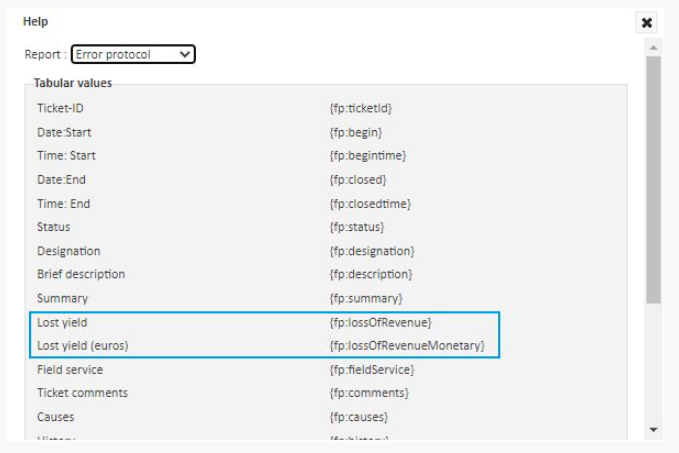Yield loss calculation
Last modified:
When your PV system experiences disruptions, technical failures, or curtailment measures, you want to know how much it will cost you – quickly. Yield loss data can help you prioritize O&M service interventions, report to relevant stakeholders, and file claims for lost revenue.

Yield loss calculation workflow
Integration in the ticket system
Since disruptions are linked to loss of revenue, yield loss calculations are integrated into the ticket system. A ticket is required to calculate yield loss.
Examples of disruption are:
Maintenance
Power control/curtailment
Technical issue
You can create a ticket in the following ways:
Convert an existing alarm into a ticket
Manually create a ticket
Use the automation feature to create tickets for yield loss calculations automatically. See Automation.
Calculation models
VCOM provides the following calculation models. All models are based on the measurement of local irradiance and energy with a typical resolution of 5 or 15 minutes. The model you choose will depend on the cause, available data, length of the disruption, and whether or not your system has power control.
Models for disruptions and technical failures
Reference system
Reference component
Linear equation
Simulation
Models for curtailments
Flat-rate billing
Peak billing
Simplified peak billing
Simulation
Note
To learn more about using the models via API, see our API documentation.
Curtailments: calculation models and sources
The calculation models flat-rate billing, peak billing, and simplified peak billing are relevant for curtailments and conform to grid feed-in guidelines from the German Federal Network Agency (Bundesnetzagentur). However, they can be applied to any location, provided the system fulfills the prerequisites.
Yield loss due to curtailments is calculated using the average setpoint value, provided the average is available. Prerequisite: You can see the abbreviation PPC_P_SET_GRIDOP_REL_MEAN under
 System configuration > Calculations > Power control.
System configuration > Calculations > Power control.You must define the source of curtailment: grid operator, energy trader, manual, static, or undetermined.
Manual: Manual curtailment of a system, for example for testing purposes.
Static: An external source (for example a grid operator) sends a signal to the data logger, and the energy trader takes no action. The signal rarely changes.
Undetermined: When an external PPC does not indicate the origin of power control setpoints, VCOM designates the source as Undetermined. This ensures a Curtailment automation can still be triggered even without a defined source.
If your system can be curtailed by both a grid operator and an energy trader, choose either source. The lower setpoint value will be automatically selected.
In addition to these models, the simulation model can be used in any situation.
For each curtailment event, you can only apply one yield loss calculation method.
Calculate a yield loss based on an existing ticket
Prerequisites
Revenue and currency are set up. See System revenue.
Steps
Navigate to the Tickets portlet.
Select the
 Pencil icon next to the relevant ticket. The details will appear in the Ticket details portlet.
Pencil icon next to the relevant ticket. The details will appear in the Ticket details portlet.In the Ticket details portlet, select the Yield loss tab.
Select the desired calculation model.
Fill in the required parameters and select
 Save. For details, see the descriptions of the individual calculation models.
Save. For details, see the descriptions of the individual calculation models.

Calculate a yield loss
Further actions
Export results
You can export the results of the yield loss as a CSV file.
Visualize yield losses
You can view curtailments in the Power control tab or the Control visualization chart.
Integrate into reporting
Yield loss is linked to a ticket and can, in turn, be shown in OpenOffice reports with the values “Lost yield” and “Lost yield (euros)”. The yield loss is recorded in the error protocol both in kWh and in the currency that this set up in the ![]() System configuration.
System configuration.

Integrate yield loss into reporting
.png)